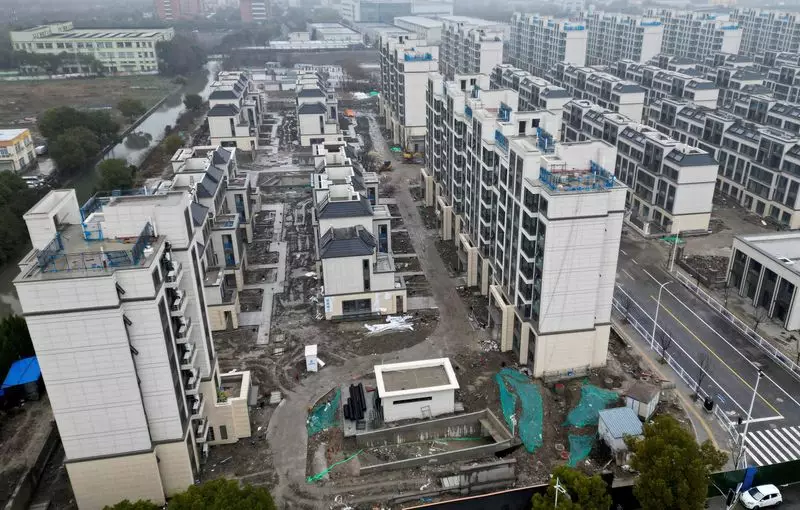In an effort to address its slowing economy, China has implemented a series of policy adjustments aimed at revitalizing its struggling property market. The People’s Bank of China (PBOC) has recently mandated that commercial banks reduce the interest rates on existing home loans by at least 30 basis points below the Loan Prime Rate (LPR), a crucial benchmark in the mortgage sector. This move signals an urgent recognition of the various economic challenges facing the nation, including stagnant domestic consumption and plummeting property sales.
With the PBOC setting expectations for an average reduction of around 50 basis points, the decision underscores a broader intention to alleviate the financial burden on homeowners. Observing drastic changes in the property market, the PBOC is making an active attempt to reassess and reconfigure the mortgage rate mechanisms that have been a source of concern for both consumers and policymakers alike.
The turmoil in China’s real estate sector can no longer be overlooked. Recent reports highlight that new home prices have experienced their steepest decline in over nine years, while property sales have tumbled by 18% in the year’s first eight months. The implications of these developments resonate beyond the real estate sector, contributing significantly to the overarching economic slowdown.
Local administrations have since devised measures to stimulate interest in the property market, with cities like Guangzhou lifting home purchase restrictions and both Shanghai and Shenzhen easing regulations for non-local buyers. Additionally, adjustments to downpayment requirements—setting a minimum of 15% for first-time homebuyers—are aimed at incentivizing prospective buyers. However, these efforts collectively have yet to counterbalance the buyer resistance fueled by uncertainty in the market.
Existing homeowners have been particularly affected, as previous mortgage rate reductions focused solely on new buyers, leaving many struggling to manage their higher-rate loans. Such a scenario compelled numerous homeowners to seek early repayment options for their mortgages, a trend that not only strains household finances but also constricts overall consumer spending—a vital component of economic vitality.
To address the imbalance confronting homeowners, the PBOC’s new decree aims to level the playing field, allowing existing homeowners to benefit from reduced mortgage rates. This initiative is part of a broader strategy to spark renewed enthusiasm among consumers and encourage them to participate more actively in the economy.
The PBOC has openly acknowledged that the current pricing mechanisms for mortgages reveal significant weaknesses that require immediate remedy. In its statement, the PBOC emphasized the necessity for timely adjustments to ensure that the interplay of supply and demand within the real estate market evolves positively. The PBOC’s proactive stance indicates a shift toward more responsive and flexible interest rate policies that can adapt to emerging economic realities.
While the adaptations to mortgage rates are a step in the right direction, deeper systemic issues within the real estate market remain persistent. The government’s commitment to extend supportive measures for developers, including real estate development loans until the end of 2026, helps address financing issues, but it requires a comprehensive approach to reinvigorate confidence within the real estate sector.
The measures initiated by the People’s Bank of China are clear indicators of a strategic pivot designed to mitigate the pressing challenges plaguing the property market. While the immediate effects of reduced mortgage rates and eased purchasing restrictions are yet to be fully realized, these policies express an intent to strengthen consumer ties to the economy and rejuvenate the property sector.
China’s ability to adapt its strategies and implement responsive fiscal policies will be crucial in steering the economy toward stability. As the nation grapples with economic uncertainty, an optimistic outlook hinges on whether these new initiatives can effectively entice buyers back into the market and restore solid footing for both existing homeowners and prospective purchasers alike.

